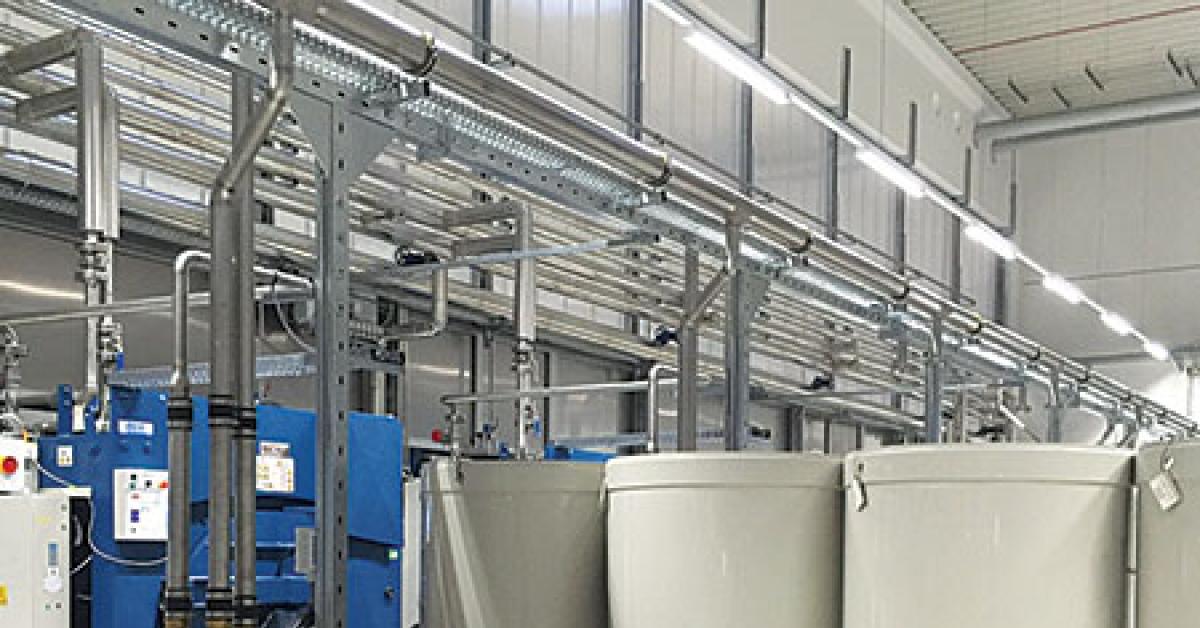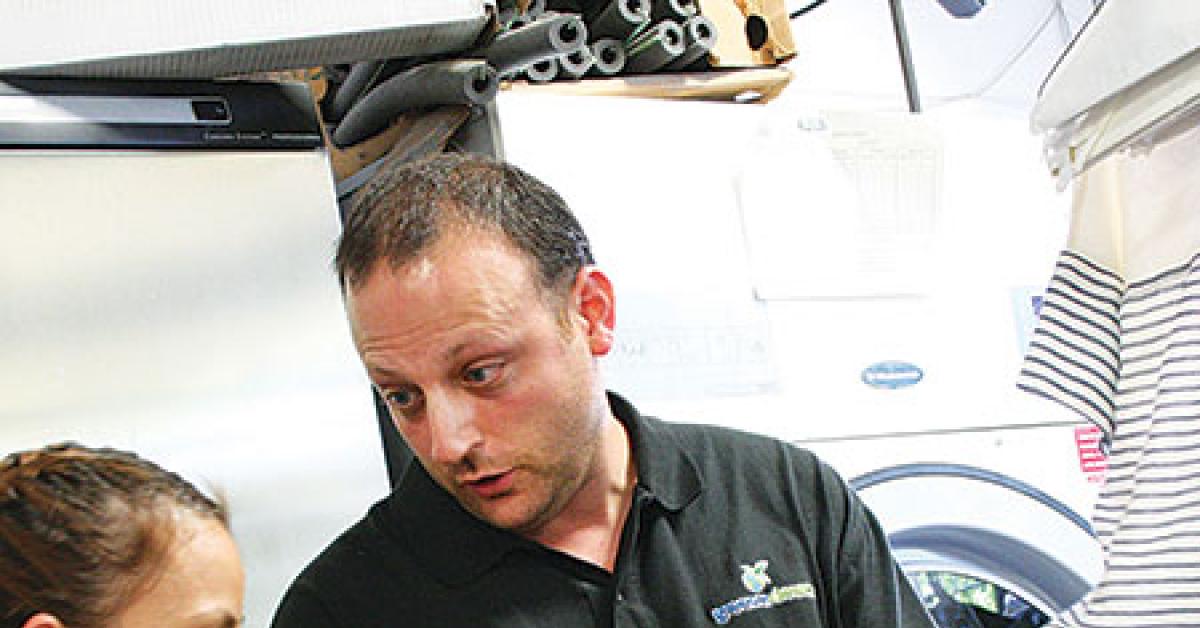CHICAGO — Water is life.
How we manage it defines us economically and socially. In the world of fabricare and garment cleaning, it’s nothing short of elemental.
Rob Walker, president of Max I. Walker in Omaha, Neb., runs 26 locations in his operation, two central plant laundries, four package plant shirt laundries, and also a uniform rental operation running 12 routes.
“In our drycleaning operation, we try to use wash formulas that reduce the amount of water needed in the wheel for laundered shirts,” says Walker. “Also, cooling towers are used for hydrocarbon cleaning machines, reducing the amount of city water used for cooling.”
The drought in the western United States has elevated awareness about water management. If you live or travel there, you know all about water-use restrictions, low-flow devices, and the need to change basic habits once taken for granted such as drinking water, showering, doing dishes—and fabricare.
The state of affairs in the area of water conservation for Walker’s midwestern region of the United States is not as critical as California or Arizona, he points out.
“But that doesn’t mean we don’t look at all areas that we can, to save water in our operation. This is very critical in our uniform rental operation, as we use large amounts of water and incur sewer surcharges based on usage,” says Walker.
“This area of our business is where we see the most investment in technology and equipment being made because of the volume of water being used,” he adds.
Mike Bleier is the owner of Drive Cleaning and Greener Cleaner, a Chicago-area five-store operation, in business for more than 20 years.
“In Illinois, we don’t have the issue with water restrictions but we take water seriously,” says Bleier, who notes that his company is “water-responsible all the time.”
According to Bleier’s website, the company is the first 100% wet cleaner in the United States, starting in 1995.
“We take our water used for cooling our drycleaning machines, which has been heated through use, and we put it back into our laundry machines for reuse, thus saving money by conserving water,” Bleier explains.
Clean water is everyone’s responsibility — citizens and businesses alike.
Environmental Protection Agency (EPA) regulations are only one part of the picture. Publicly Owned Treatment Works (POTW) are another part. Changes to the drycleaning and fabricare industry, such as the emphasis on wet cleaning and wash and fold, are still another part of the story.
In answer to a question about water conservation challenges today, Walker indicates, “As the market demands more wet washing, things will change. You are already seeing this in the home washer market with new water-saving technology.”
Regarding testing, “on the uniform side, local POTW inspectors do on-site sampling twice a year, pulling hourly wastewater samples each hour for 24 hours, seven days in a row.”
Testing to meet regs is just one part of a large “watershed” issue for the fabricare industry. Water and energy costs, along with water reuse, are part of an operator’s daily dialogue now.
DRINK IT IN
“Water, water, everywhere, nor any drop to drink” — from The Rime of the Ancient Mariner.
Many operators are no doubt already immersed in water reuse, following water-saving practices and utilizing necessary equipment. Are these strategies solving today’s water worries?
Enter Mike Diedling with some observations; he’s manager of the applications engineering department at Pellerin Milnor, the Kenner, La.-based laundry equipment manufacturer in business since 1947.
“Most laundry and drycleaner operators have already taken advantage of one or more of the following techniques to reduce their water and sewer costs,” says Diedling.
First are “tweaked wash formulas to achieve minimum water use.”
Second, he indicates that cleaners have “purchased equipment to allow water reuse (e.g., save last rinse to use on flush of next load).”
Next, he points out, dry cleaners should have “applied for evaporation credits so sewer charges are not based on the same water quantity as incoming water.”
Finally, Diedling says operators should have “purchased equipment to recycle water.”
Population growth, drought and education about water conservation has brought to the forefront the need to protect our most precious commodity — safe, fresh, drinkable water.
Diedling brings some frothy perspective: “On the availability side, the numbers I’ve seen say that only about 3% of the water in the world is potable (drinkable).”
He explains that half of the 3% is used for agriculture, while the rest is divided between personal consumption and “the remaining 20% of the 3% is for industry, including laundries and dry cleaners.”
As the population increases, he notes, “We are more and more susceptible to shortages which can be exacerbated by lack of normal rainfall. Costs for water and sewer charges are rapidly increasing. There are already several areas in the U.S. with combined water and sewer charges well in excess of $30 per 1,000 gallons.”
Regulations uphold the high-tide standards that keep us all safe — businesses and consumers alike.
On the disposal side, the EPA sets minimum quality standards for discharging water into oceans, lakes, rivers and streams.
“Typically,” Diedling says, “it is your local POTW that sets its own minimum quality standards for water it receives from homes, offices and industrial sites in its district.”
Local water quality standards for POTW must be equal to or more stringent than EPA in order for the POTW to participate in government grants to build and maintain facilities, he says. “To participate in the grants, the EPA requires local POTWs charge for wastewater based on quantity and quality.”
Conserving water in your operation is at a high level of importance.
Will reused and recycled water quality be up to industry standards? “The reuse and recycled water must meet very high quality standard to prevent any issues with wash quality,” says Kevin Minissian is CEO of Los Angeles-based Norchem Corp., a clean tech engineering company that offers water conservation solutions and green laundry chemistry to the fabricare market.
“The benefits of cold water washing is shorter wash times, improved fabric longevity, and immense water/heat savings.”
Greener Cleaner’s Bleier says, “Part of our DNA is to have a responsible water and energy footprint.”
“Fresh, potable water is becoming the new oil in terms of cost and availability,” says Diedling.
To read Part One, go HERE.
Have a question or comment? E-mail our editor Dave Davis at [email protected].



